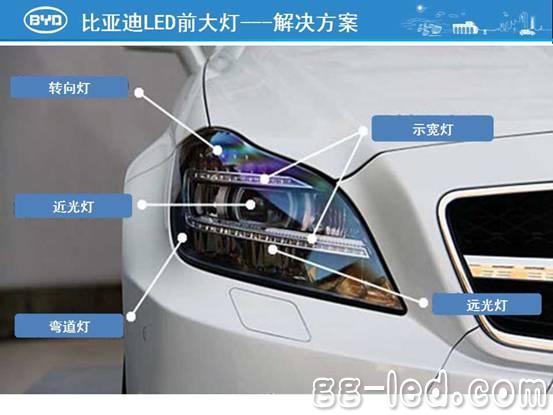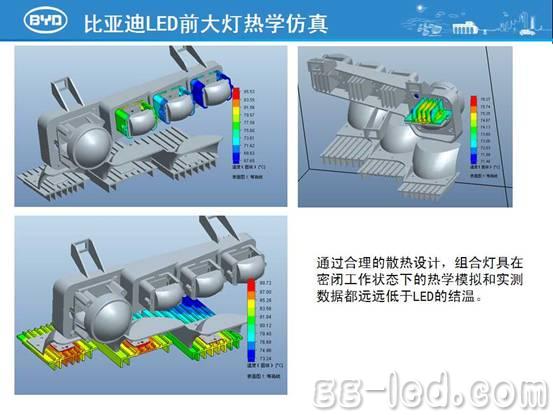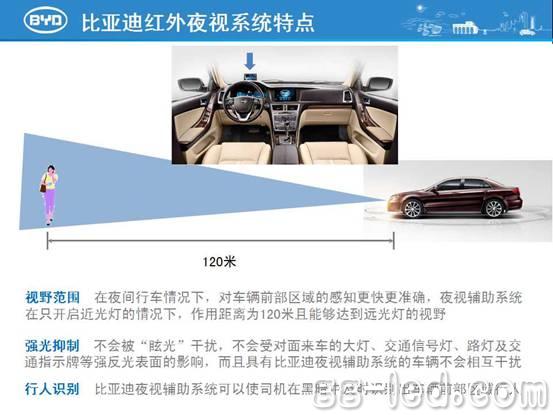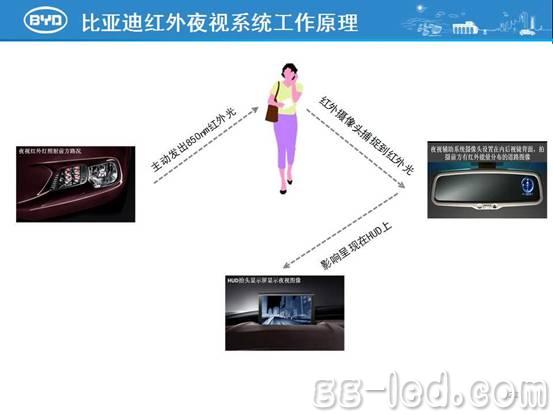
According to Tang Jun, the main business of BYD Lighting is composed of LED indoor lighting, LED outdoor lighting and LED lights. Among them, LED lamp business mainly includes LED brake lights, LED combination tail lights, LED instrument lights, LED infrared lights and so on.


In addition, BYD has launched the corresponding LED headlight solution and has intelligent control functions. Previously, LED headlights have been monopolized by international manufacturers, and domestic manufacturers have rarely been involved.




"But at present, LED headlights still face many challenges, including cost, optical design, heat dissipation, etc." Tang Jun said that because LED automotive lighting applications are more skilled in lighting companies, lighting companies for the automotive industry The lack of in-depth understanding of the standards, manufacturing, and process systems, and the experimental equipment of the lighting factory can not meet the requirements of the car for the lights. BYD has two brands, BYD Lighting and BYD Auto, which have advantages in the development of LED lights.



BY Jun’s unique infrared night vision system for cars mentioned in his speech attracted the attention of many audiences on the scene. (This article is a BYD lighting submission)

Dual-band WiFi module refers to the WiFi module that supports both 2.4GHZ and 5GHz bands. The dual-band WiFi module can operate in the 5Ghz band, which is much cleaner and can easily avoid interfering with each other. The advantage of 2.4G is that it has good ability to penetrate the wall, and the disadvantage is that it is easy to be disturbed. The advantages of 5G are strong anti-interference ability, wide band width, high throughput rate, and strong scalability, but the disadvantage is that 5G is only suitable for indoor small-range coverage and outdoor bridge, and the attenuation effect of various obstacles on it is much larger than 2.4g.
Dual-band WiFi module has a stronger and more stable Wifi wireless signal, higher transmission speed, and can make wireless devices more power-saving, to meet the future high-definition and big data wireless transmission needs.
When selecting a dual-frequency WiFi module, we should pay attention to these parameters of the WiFi module: size, package, frequency range, data rate, transmission rate, transmission distance, communication interface, power supply voltage, antenna interface, etc.
Dual frequency WiFi module can well meet the functional needs of users, increase the competitiveness of the product, while the WiFi module is easy to use, can shorten the user product development cycle, speed up the product market! Users can make choices according to actual needs!
Choosing a dual-band WiFi module may need to pay attention to the following points:
(1) Consider the transmission power of the dual-frequency WiFi module
The transmitting power of the WIFI module is generally about 18dBm, and the transmitting power of the high-power WIFI module is about 28dBm.
(2) Transmission rate
Consider whether the dual-band WiFi module supports MIMO technology (that is, allows multiple antennas to send and receive multiple spatial streams simultaneously)
(3) Consider the application interface that dual-band WiFi modules can provide, which is also very important.
(4) According to the requirements of the application scenario to choose the dual-band WiFi module, not the higher the configuration, the better, the application is good, excess waste!
Dual Band Router Module,Dual Band Wifi Module,Dual Band Router Embedded Wifi Module,Gigabit Ethernet Router Module
Shenzhen MovingComm Technology Co., Ltd. , https://www.mcrouters.com